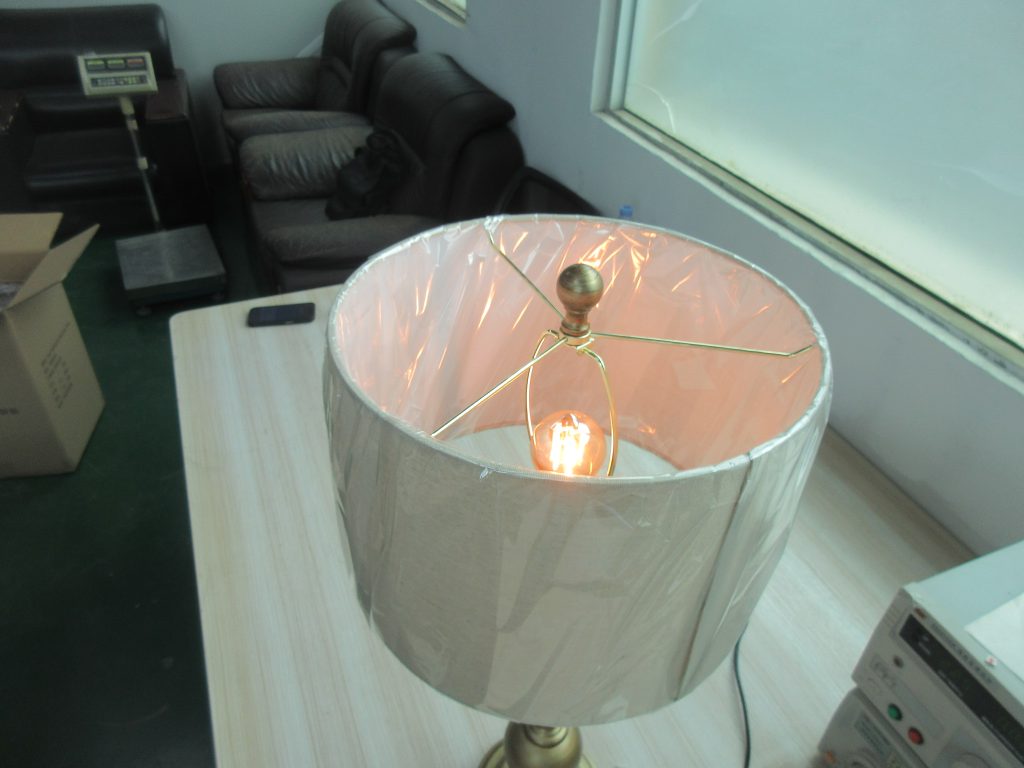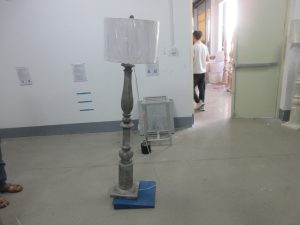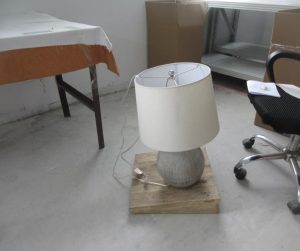
In the quality inspection of table and floor lamps, the inclination test (stability test) is a crucial safety procedure. It verifies that the lamp remains stable on a sloped surface, ensuring user safety and compliance with market regulations such as UL or IEC standards. Here is a detailed introduction to the inclination test:

The inclination test checks the stability of the lamp to ensure it does not easily tip over during use. The method is to place the lamp on an inclined test board and observe whether it remains upright at the specified angle.
Common requirements include:
For standard table and floor lamps (UL standard): the lamp must remain stable on an 8° inclined plane.
For children’s lamps (UL standard): the lamp must remain stable on a 15° inclined plane.
For European markets (IEC/EN standard), the typical requirement is 6° for standard lamps.
The test is performed in four directions (front, back, left, right), and the product must not tip over in any direction.

The inclination test ensures the lamp is safe for everyday use and meets regulatory requirements:
Prevent accidents: Avoid burns, injuries, or fire hazards caused by tipping.
Meet legal and market standards: Compliance with UL, IEC, or EN safety regulations.
Improve user experience: A stable and reliable product increases customer trust and reduces returns or complaints.
When carrying out the inclination test, the following points must be observed:
Complete assembly: The lamp must be fully assembled with all its components, including bulbs, shades, and weights.
Working condition: The lamp should be powered on and operating during the test.
Test all directions: The lamp must be tested in all four directions to ensure overall stability.
Proper environment: The test board surface must be clean and level, with appropriate friction to avoid affecting the result.
Children’s lamps: Lamps marked or intended as “suitable for children” must pass the 15° inclination test per UL requirements
For tall or narrow-base lamps, designers can improve stability by increasing the base weight or enlarging the base footprint.
For products exported to multiple markets, always design to meet the most stringent standard.
If the product fails the test, adjust the structure or add weight before retesting.

By conducting rigorous inclination testing, we ensure that every table and floor lamp is not only stylish and functional, but also safe and compliant with high standards in key global markets — providing peace of mind for your home or business.
If you’d like to learn more about testing standards or discuss customized solutions, feel free to contact our professional team.
